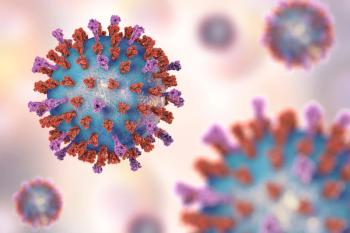
Cell Metabolism Could Provide Treatment Target for Diffuse Large B Cell Lymphomas
The metabolic protein SIRT3 reduces the pools of amino acids that cells use to make proteins and otherwise fuel their growth.
New research has found that aggressive diffuse large B cell lymphomas (DLBCL) have a specific metabolic vulnerability that could be exploited to trick the cancers into starving themselves, according to investigators at Weill Cornell Medicine and Cornell’s Ithaca campus.
A protein called ATF4 is a genetic master switch that controls the activities of hundreds of genes, according to the study authors. This protein has a vital role in supporting the fast growth of DLBCLs and silencing the protein could essentially fool the cells into slowing their own growth. Furthermore, targeting ATF4 along with the metabolic protein SIRT3 could further enhance the cancer-killing effect.
“ATF4 represents a crucial and exploitable vulnerability in DLBCLs—and one that they appear to share regardless of the specific genetic mutations that trigger them,” said study co-senior author Ari Melnick, MD, in the press release.
Lymphomas are cancers of the blood that typically originate from immune cells, such as B cells. According to the study, the majority of lymphomas are non-Hodgkin lymphomas and DLBCLs account for approximately one-third of these. This form of lymphoma is relatively fast-growing and aggressive, and approximately 40% of cases are not cured.
The team of researchers aimed to investigate SIRT3, which resides in the mitochondria. A 2019 study had found that SIRT3 strongly supports the growth and survival of DLBCLs by accelerating the biochemical reactions that produce the molecular building blocks that cells need to proliferate. In the new study, they further explored how SIRT3 promotes this cell growth, and found that one of the most important ways it does this is by increasing the production of another metabolism-influencing protein: ATF4.
As it accelerates DLBCL metabolism, the researchers found that SIRT3 reduces the pools of amino acids that cells use to make proteins and otherwise fuel their growth. This reduction amounts to a starvation signal that activates the protection of ATF4, which then ramps up the production and import of amino acids. This further sustains the malignant proliferation of DLBCL.
Researchers in the 2019 study also developed a selective SIRT3 inhibitor, finding that it kills DLBCL cells regardless of the cancer-driving mutations that they carry. In the new study, they found that SIRT3 inhibition results in an accumulation of specific amino acids that are generated by the treated cells cannibalizing their own proteins. This tricks the cells into behaving as if they had an adequate nutrient supplies and results in paradoxical suppression of ATF4 production, in turn leading to more severe starvation.
To further harness this effect, the investigators experimented with a compound that blocks the activation of ATF4. They found that it has a similar broad impact on DLBCL cells, and also noted that combining the ATF4 and SIRT3 blockers had a significant lymphoma cell-killing effect.
“One of the really interesting things about this study is that it shows how nutrient conditions, in principle even from patients’ diets, can profoundly affect cancer cell activity,” said study first author Meng Li, PhD, in the press release.
The team is now working to find the best way to target the SIRT3-ATF4 axis to treat DLBCLs, according to the press release.
REFERENCE
Lymphoma Cell Metabolism May Provide New Cancer Target. News release. Weill Cornell Medicine; January 3, 2022. Accessed January 4, 2022.
Newsletter
Stay informed on drug updates, treatment guidelines, and pharmacy practice trends—subscribe to Pharmacy Times for weekly clinical insights.




